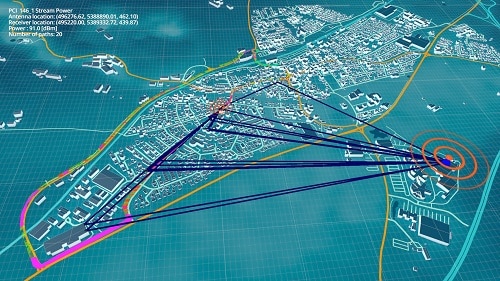Altair has announced the release of its new simulation software that covers multiple domains, from electrical design to architecture, engineering, and construction (AEC). The software focuses on next-generation connectivity and features advanced tools and easier interfaces for faster and more efficient work. The connectivity features include support for improved computational performance when simulating larger, more complex antennas and their operating environment. The software is capable of handling simulation and design for power supplies, microgrids, and other power electronics components.

“The release of Simulation 2022 continues Altair’s tradition of leading in computational science and artificial intelligence,” said Sam Mahalingam, chief technology officer, Altair. “By adding more features, tools, interfaces, and workflows that let users work faster and more efficiently, we’re enabling a better and more sustainable future. Better simulation makes better, smarter products, and we’re proud to be at the forefront of tomorrow’s connected future.”
According to the company, the connectivity updates in the software include features that help users simulate antennas with great accuracy, which allows for faster resolution of complex problems faster, and broaden users’ toolset for advanced driver-assistance systems (ADAS) applications. It also supports automation of realistic 5G envelope beam patterns and includes features like rotating Doppler effects for ray-based solvers and new hybrid ray-tracing patterns
Altair Simulation 2022 lets users simulate full-wave antenna and array characterizations so they can reliably analyze wireless systems. It also provides application-specific and post-processing tools, such as frequency-modulated continuous-wave (FM-CW) radar simulations that target ADAS applications. The software offers improved ADAS that is capable to distinguish between sensor types like ultrasound, which increases the number of sensors that can be simulated together.
The company claims that the Altair Simulation 2022 includes more capabilities for circuit board and electronic design tools that lets users design and implement smart components, products, and systems. It also features expanded design verification, signal integrity, and printed circuit board (PCB) modeling functionalities along with cross probe verification like DFx Excel results and a direct ECAD link to Pulsonix and Altium Designer.
Additional functionalities such as drop test, multiphysics analysis for PCBs, and thermal management simulation that can cover entire systems can be accessed by updating the software to Altair SimLab. This software introduces new tools for power electronics and motor drives, including PSIM, which can handle simulation and design for power supplies, motor drives, control systems, and microgrids.






